| More
of Pipestone |
 |
A look back, from the
shelter of the woods, towards the park
headquarters across an open field. |
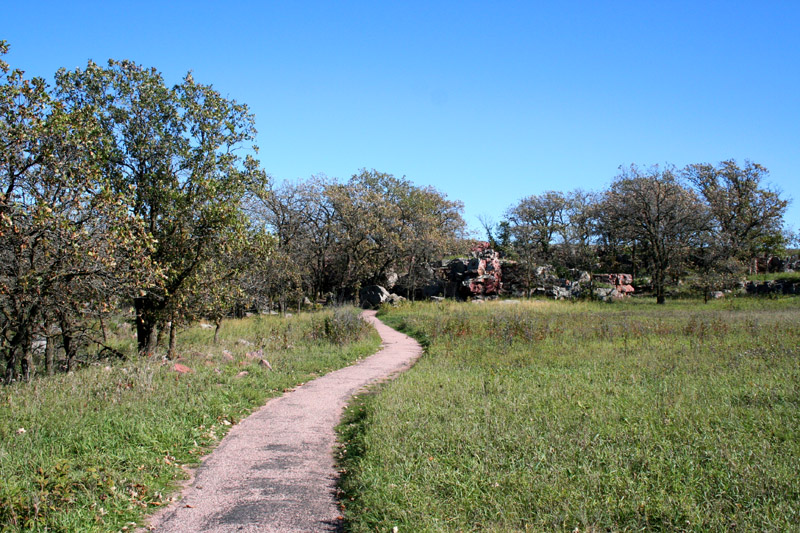 |
A look back at the rock
outcroppings, at the eastern edge of the
monument. The waterfall is hidden by the
trees; but would be on the left hand side of
the photo. |
 |
A look across one of the
open parts of the monument. A bit of the
town of Pipestone can bee seen |
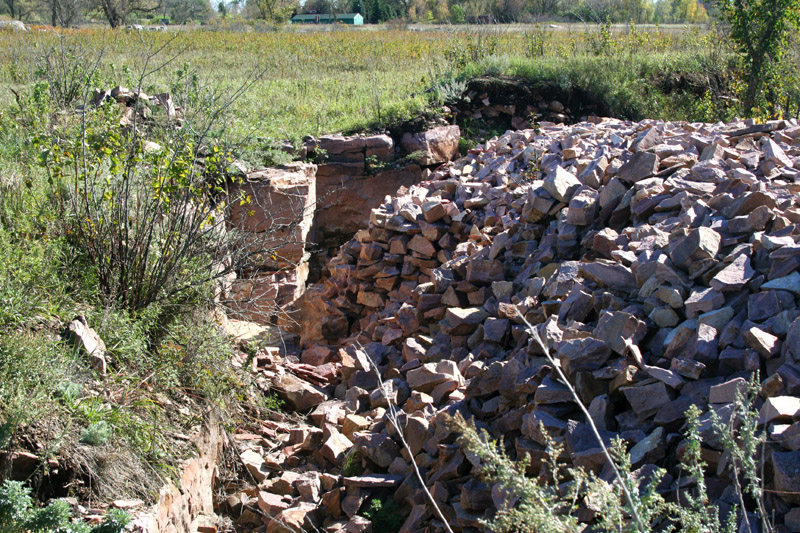 |
A look at a traditional,
and active, quarry. The overlying quartzite
is smashed away, and discarded, to reveal
the layer of Pipestone below. |
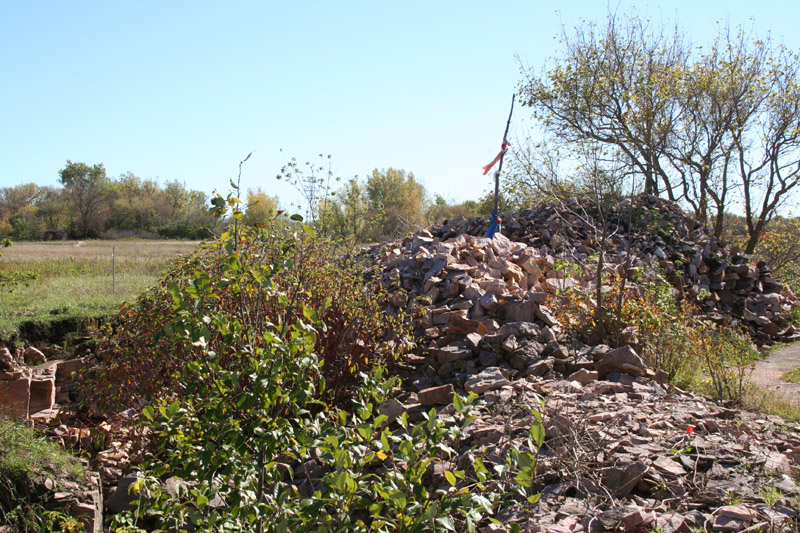 |
Various markers can be
seen around the pits. These are claim
markers, and each is flagged in a unique
style to identify the claimant |
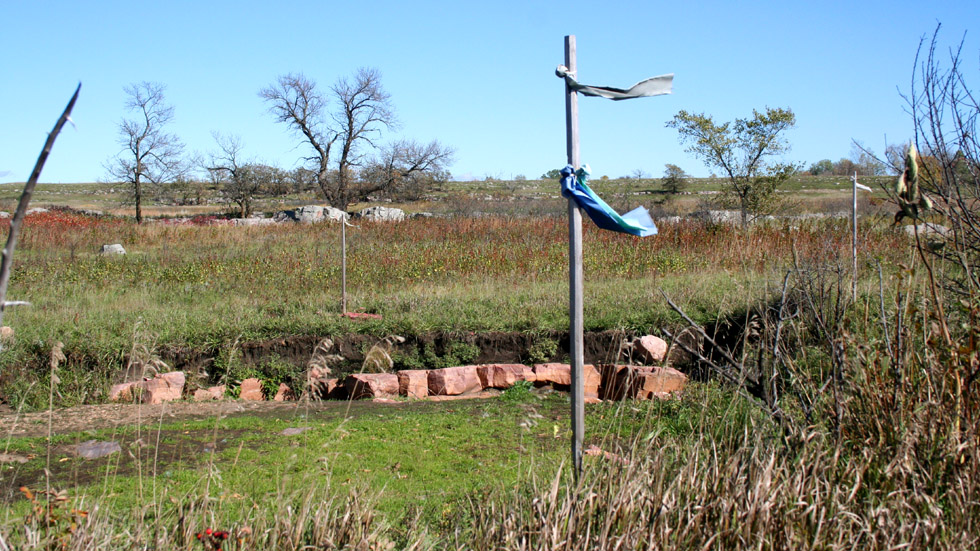 |
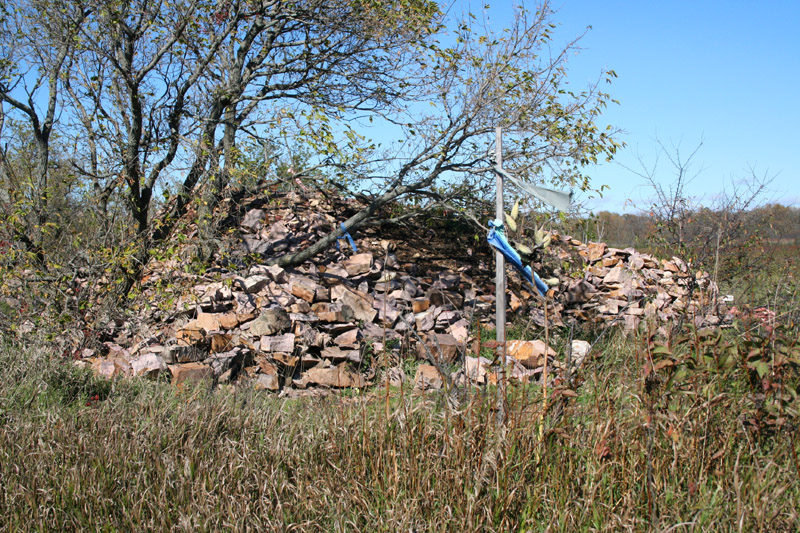 |
More markers, and another
pile of discarded quartzite indicate the
presence of an open pit quarry. |
 |
One of the Indians
working the quarry pits for stone. These men
tend to do it all, they quarry, cut and then
carve out the final stone pipes. Many of
these pipe makers are from families which
have been doing this for generations. |
 |
A branched stick, sits in
yet another pile of quartzite rocks, to mark
the territory of a quarrier. |
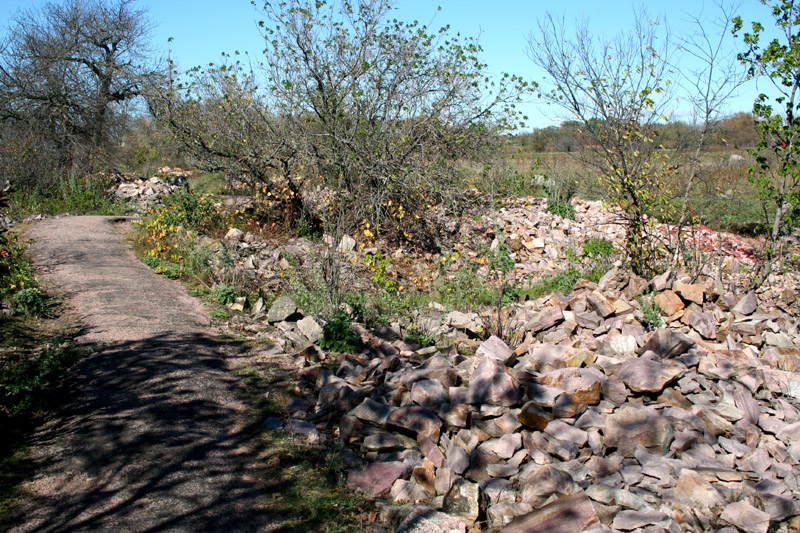 |
A path winds through a
number of working quarry pits. These pits
are worked the old ways, and considerable
effort is required to bring forth the prized
stone. |
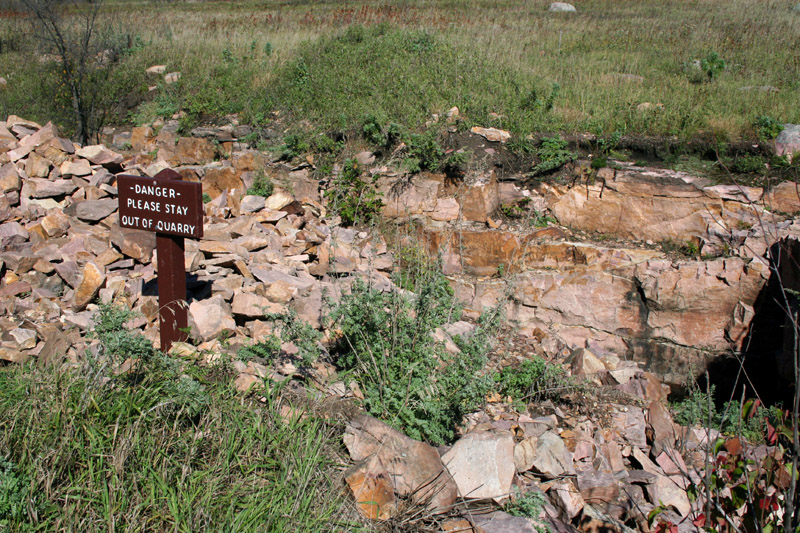 |
These quarries can get
deep, and their bottoms are rock floored.
the visitor is advised not to venture too
close. A tumble down to the bottom would be
a nasty experience. |
 |
Another active pit, this
one distinguished by a name. |
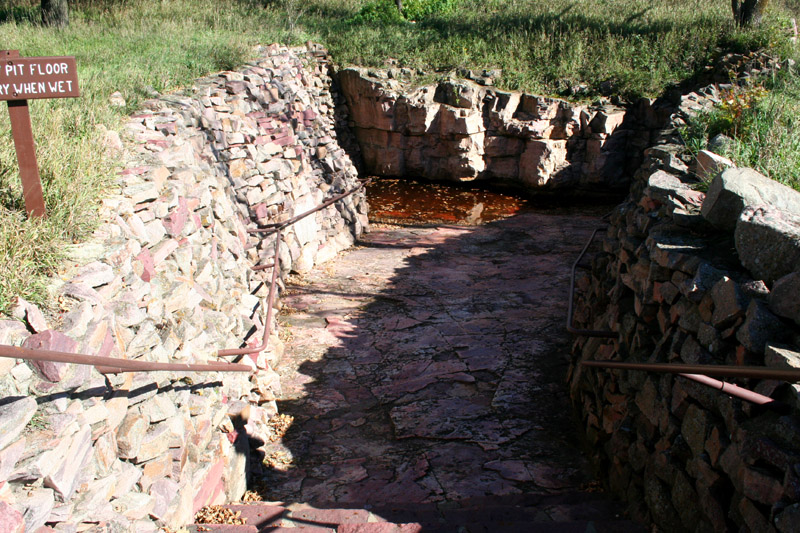 |
An ancient quarry, which
has been worked out, and is on display for
visitors. |
 |
Left:
For those who are interested, there is a
display of Pipestone at monument
headquarters. The visitor is welcome to
scratch, hit, saw, or just look; but it must
stay on the table.
Below:
A depiction of the quarry fields, back when
the tribes dominated the area. Like a sort
of an embryonic U.N. this was a neutral
area, where no fighting was permitted, and
no ownership recognized. |
 |
 |
The headquarters has a
museum, outlining both the history, and
geology of the area. |
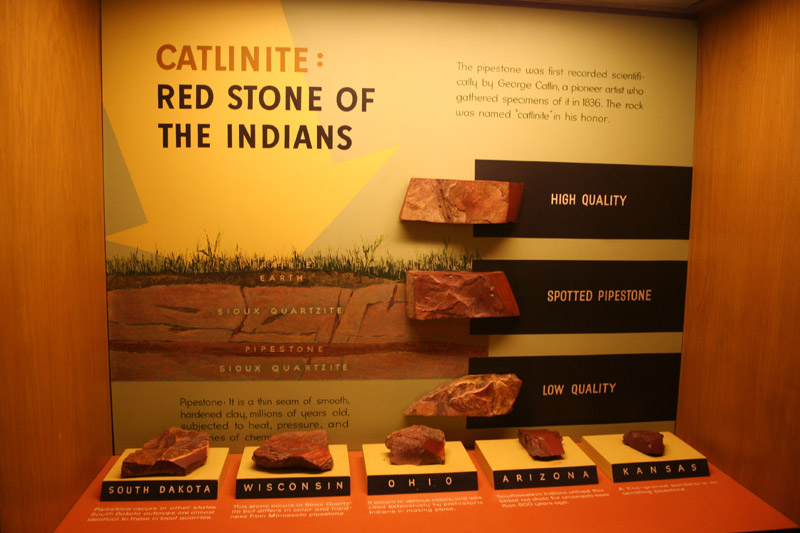 |
A selection of various
qualities of Pipestone. Not all Pipestone is
created equal, it seems. Note the diagram,
which shows the shallow layer of Pipestone,
sandwiched between the harder quartzite. |
 |
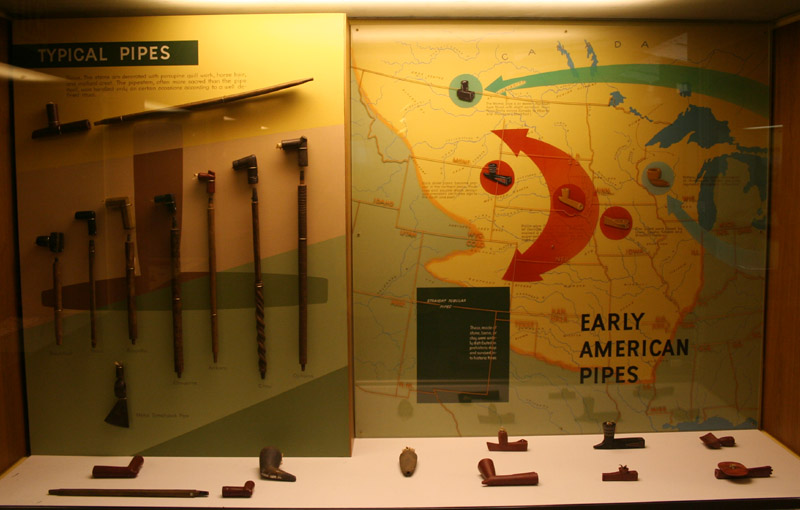 |
Some displays showcase
the various pipes, and other articles
commonly made from Pipestone. A map shows
the major lines of distribution, for the
Pipestone quarried here. Pipestone was
distributed all over the continent, even
down to what is now Mexico. |
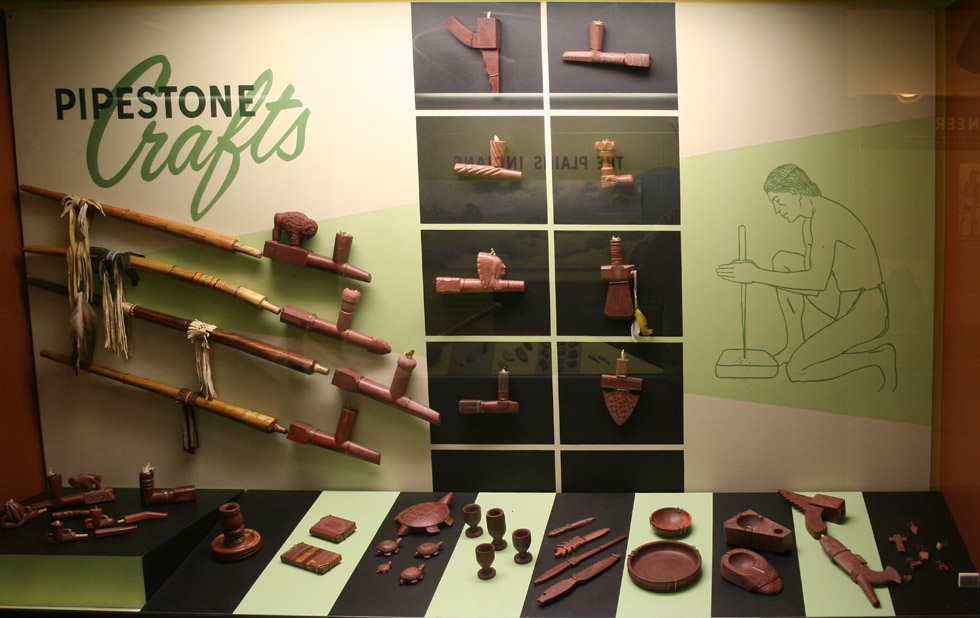 |
 |
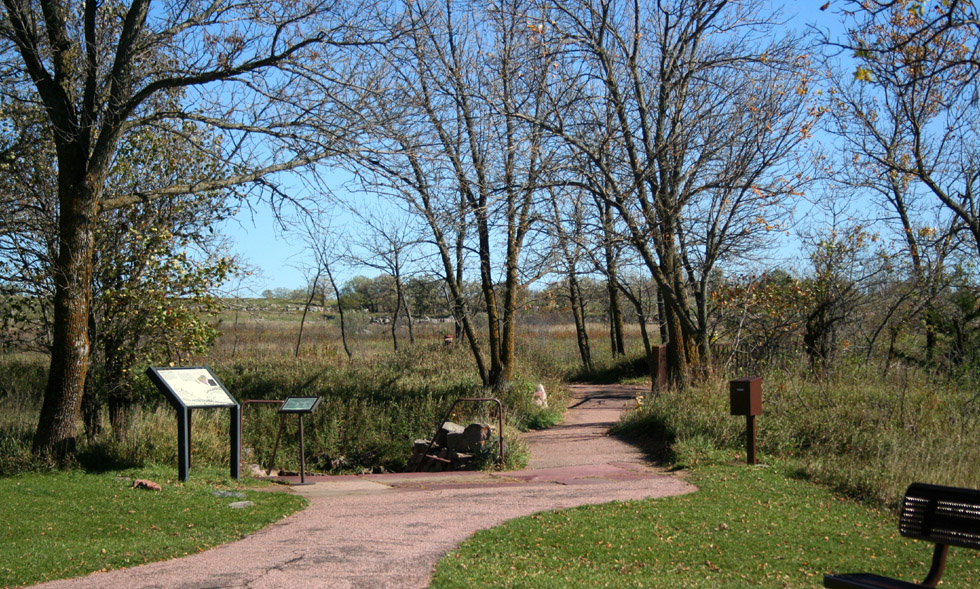 |
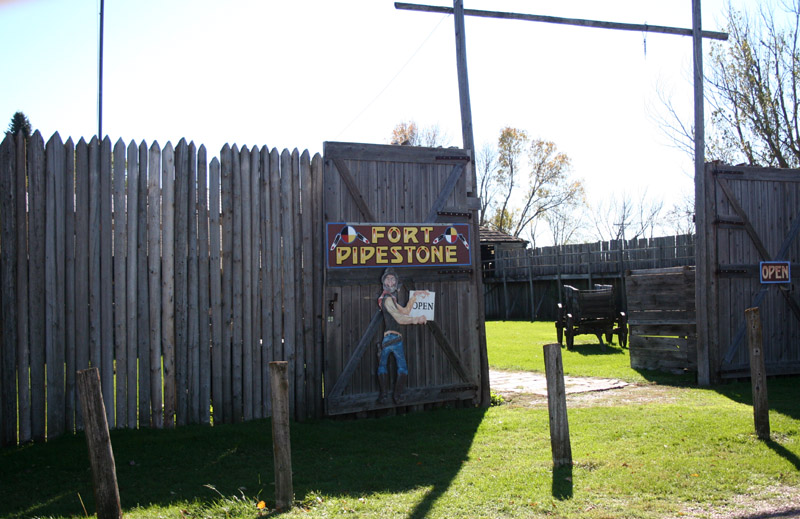 |
Above:
One last look, before leaving.
Left:
One of the few tourist traps in the area is
Fort Pipestone. Some of the Indians sell
stone here. It is perfectly legal to buy, as
long as it comes from an Indian source. |
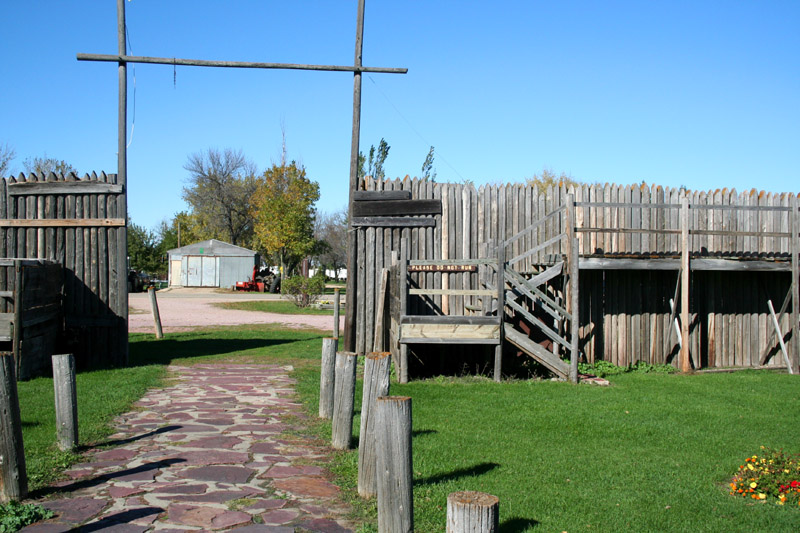 |
Left and Below:
Inside Fort Pipestone. The inside of the
store is full of what you would expect.
There are postcards, souvenirs, toys, Indian
trinkets, and even some bits of Pipestone
itself. |
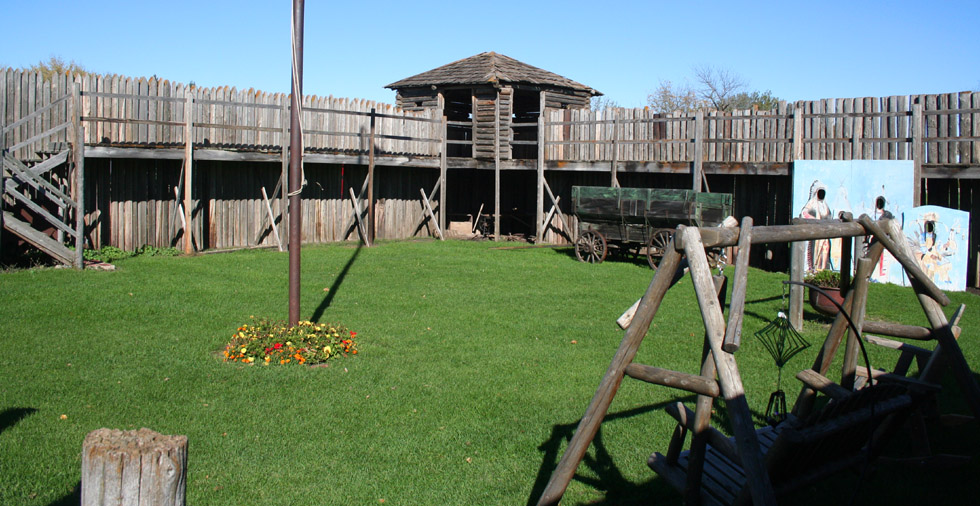 |
